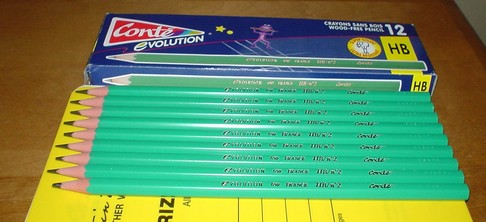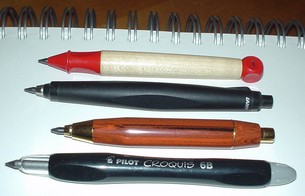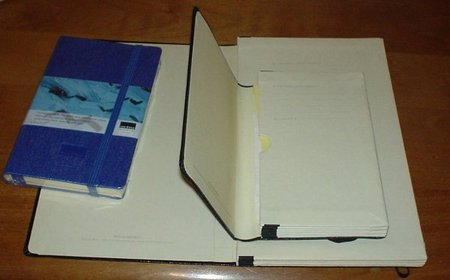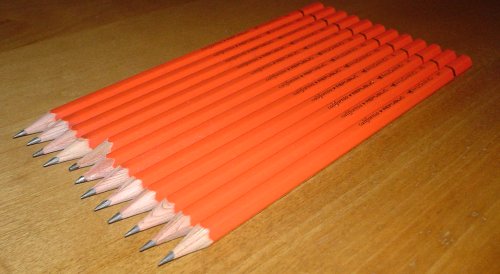
Photo: The Conté Evolution on another plastic object – a Rite in the Rain notebook.
This is a review of a type of pencil I hadn’t heard of until recently. Woodchuck has mentioned that there are pencil manufacturers who have rejected wood for pencil casings. Rather, they use a synthetic casing, or perhaps recycled denim.
There aren’t really that many new things in the world of pencils, and this seemed like it might be one.
Finding them wasn’t easy, and I wound up ordering a box from the U.K.
The cardboard box is quite different – a cartoon of a purple alien chewing on a pencil. There are also photos of the pencil on three sides of the box. I like this. It’s like a jam jar with a photo of a plump raspberry – there’s no doubt what’s inside.
The back of the box says:
Wood-free pencil. Stronger lead. No splintering (synthetic lead resin).
The packaging looks like it might belong in an office supply store, targeting the same consumers as Dixon. It does look a step up from a no-name pencil. I also see the “BIC” logo – I had no idea Conté was part of this conglomerate. I had recently associated the firm with art supplies.
The pencils are a dark turquoise green, with gold stamping:
evolution 650 France HB/no2 Conté
They look – to my surprise – like pencils, and the synthetic resin looks like wood from all but the closest view. What is odd is the lead – or whatever it is. It’s shiny – sparkly shiny, and doesn’t look like any lead I’ve ever seen.
After several pages of writing, I notice that the lead seems remarkably durable, and quite smudge proof. (I had been using a Palomino earlier today, which both smudges and needs regular sharpening.) Anyhow, although it didn’t need it, curiosity got the better of me, and I decided to see how it would sharpen. It’s unusual – as if slicing a film of plastic. There is indeed no splintering, and one could likely sharpen away the whole pencil in one exhausting bout into a single elongated shaving.
Sharpening also revealed an important attribute – a noxious chemical aroma was released that stayed around for at least an hour. Some cedar pencils have a pleasant aroma – but these are definitely the opposite. It made writing quite unpleasant.
One plus – the pencils are quite flexible, much more than their woodcase brethren.
So is the “Evolution” an evolution? They have some merits as writing implements, particularly the lead. But so do many woodcase pencils. Their flexibility and break resistance might make them good for travel. In the end, I don’t like the idea of breathing in whatever it is they produce when sharpened, and I’m suspicious of the unidentified materials used to manufacture them.




